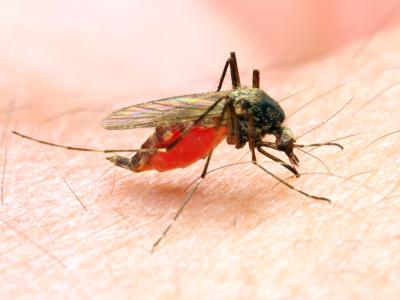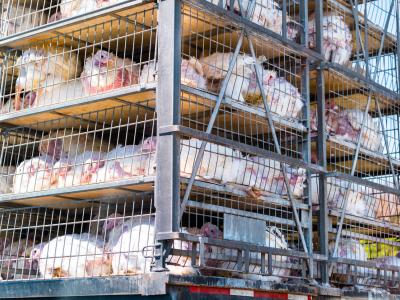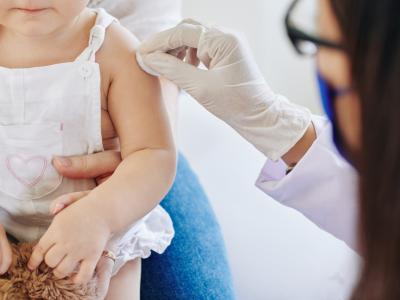USDA food institute funds 9 projects to combat antibiotic resistance
Yesterday the US Department of Agriculture's National Institute of Food and Agriculture (USDA NIFA) announced an investment of more than $5 million, spread across nine projects, to mitigate antimicrobial resistance (AMR) across the food chain.
The $5,117,165 investment is part of NIFA's Agriculture and Food Research Initiative's Mitigating Antimicrobial Resistance across the Food Chain grant program, which supports integrated research, education, and extension projects, NIFA said in a news release. Research approaches include risk assessment, antibiotic management and stewardship, advancing understanding of emerging resistant pathogens and their mechanisms for resistance, and disease control using antimicrobial alternatives.
Funded projects include University of Florida scientists studying the effects of spraying fruit trees with antibiotics to prevent or treat citrus greening disease, Iowa State researchers modeling the movement of bacteria through different environments such as surface water, and Ohio State investigators studying the movement of auctioned calves through the market to better understand how antimicrobial drugs are used to prevent and treat disease.
"Pathogen resistance to antimicrobials is a complex problem, encompassing human medicine, poultry and livestock health, and even plant crop production," said Acting NIFA Director Dr. Dionne Toombs, PhD. "The projects supported through this investment will work to ensure a safe, nutritious and abundant food supply while conserving antimicrobial effectiveness."
NIFA says the nine projects will help strengthen the USDA's overall efforts to protect public health through agricultural research that addresses AMR.
May 26 USDA NIFA news release
Study suggests links between resistant E coli in chickens and people
A study conducted on farms in the Mekong Delta of Vietnam suggests antimicrobial resistance (AMR) in Escherichia coli from chickens and in-contact humans is driven by antimicrobial use and potential cross-species transmission, researchers reported in JAC-Antimicrobial Resistance.
For the study, a team of researchers from Vietnam and the United Kingdom collected data on antimicrobial use (AMU) and fecal swabs from humans and chickens on 237 small-scale farms in the Mekong Delta. The researchers isolated E coli strains from 426 human and 237 chicken samples, tested their susceptibility to 11 antimicrobials, and investigated the associated between AMU on the farms and AMR levels. They also examined the degree of similarity in AMR patterns between human and chicken E coli isolates from the same farms compared with isolates from different farms.
Bases on structured One Health questionnaires filled out by the participants, the researchers estimated that 13.8% had used antimicrobials over the past 90 days, and that antimicrobials had been administered to 114 of 237 chicken flocks (48.1%). Overall, the AMU rate in chickens (299.1 per 1,000 chicken-days) was 19 times higher than the AMU rate in humans (15.1 per 1,000 person-days). Among the tested isolates, 311 (80.8%) from humans and 195 (82.3%) from chickens were resistant to at least one antibiotic. Chicken isolates displayed a higher prevalence of multidrug resistance (63.3%) compared with human isolates (55.1%).
Using logistic regression modeling, the researchers found that AMU significantly increased the probability of resistance in E coli isolates from humans (odds ratios [ORs] of 2.1 to 5.3) and chickens (ORs from 1.9 to 4.8). E coli from humans and chickens living on same farms had a higher degree of similarity in their AMR patterns than isolates from humans and chickens living on different farms. Notably, there was a suggestion of a higher probability of the co-existence of colistin-resistant E coliin humans and chickens if they lived on the same farm.
"In conclusion, using a One Health survey design that involved co-sampling of humans and chickens from same farms and integrated AMU and AMR data, we were able to demonstrate correlation between AMU and AMR, as well as potential interspecies transmission of certain resistance phenotypes," the authors concluded.
May 27 JAC-Antimicrob Resist study
Project aims to help limited-resource countries address AMR
Originally published by CIDRAP News May 25
UK-based charitable foundation Wellcome is funding and co-developing a new project aimed at helping countries with limited resources make the best use of antimicrobial resistance (AMR) surveillance data to optimize antibiotic use and help reduce the spread of drug-resistant pathogens.
Working in collaboration with the World Health Organization (WHO), an international team of researchers, data-modelers, and policymakers will study relevant existing datasets on clinical management, antibiotic resistance, antibiotic management, and clinical outcomes to develop simple systems that aim to provide low- and middle-income countries (LMICs) with a more comprehensive view of their patterns of antibiotic use.
The hope is that national governments and local policymakers can then use this information to develop locally relevant policies, guidelines, and targets to reduce inappropriate antibiotic use.
Wellcome will fund the ADILA (Antimicrobial Resistance, Prescribing, and Consumption Data to Inform Country Antibiotic Guidance and Local Action) project for 3.5 years.
"The availability of the tools that will emerge from ADILA will be another step towards enabling and empowering decision makers in countries with limited resources to design and implement local policies better adapted to their own local settings," Wellcome science and research manager Chibuzor Uchea, PhD, said in a post on LinkedIn. "This work will allow for the creation and use of more meaningful guidelines and targets and support greater national ownership of and commitment to tackling AMR."
May 24 LinkedIn post
Risk factors for death from multidrug-resistant infections identified
Originally published by CIDRAP News May 25
A retrospective study of patients at Veterans Affairs (VA) hospitals with carbapenem-resistant Acinetobacter baumannii (CRAB) and Pseudomonas aeruginosa (CRPA) infections found that positive blood cultures and more comorbidities were associated with higher odds of mortality, researchers reported yesterday in BMC Infectious Diseases.
In the study, researchers analyzed CRAB and CRPA isolates from patients treated at 142 VA facilities from 2013 through 2018 and used multivariable cluster adjusted regression models to identify factors associated with hospital length of stay (LOS) and 90- and 365-day mortality after positive CRAB and CRPA cultures.
Over the study period, they identified CRAB and CRPA in 1,048 and 8,204 patients, respectively. The number of CRAB and CRPA cultures decline by 20% and 41%, respectively.
Among patients with CRAB, 30.3% died within 90 days, and 46.5% died within 365 days, and the median LOS post-culture was 20 days. Among CRPA patients, 24.5% died within 90 days, and 40.3% died within 365 days, with a median post-culture LOS of 16 days. In the multivariable analysis, positive blood cultures were associated with an increased odds of 90-day mortality compared to urine cultures in patients with CRAB (OR, 6.98; 95% confidence interval [CI], 3.55 to 13.73) and CRPA (OR, 2.82; 95% CI, 2.04 to 3.90).
In patients with CRAB and CRPA blood cultures, higher Charlson Comorbidity Index score was associated with increased odds of 90-day mortality. In CRAB and CRPA, among patients from inpatient care settings, blood cultures were associated with a decreased LOS compared to urine cultures.
The study authors conclude that despite the observed decline in CRAB and CRPA infections in VA patients, the two multidrug-resistant organisms should continue to be considered a serious threat, and that it's important for clinicians to recognize these risk factors in infected patients and appropriately treat them in a timely manner.
May 24 BMC Infect Dis study
WHO lays out priorities in battle against antimicrobial resistance
Originally published by CIDRAP News May 23
WHO last week published its strategic priorities for tackling AMR.
The document lays out four strategic priority areas that incorporate what the WHO says are the essential components of the AMR response at global, regional, and country levels. It also lists the key achievements and the next steps that need to be taken in those four areas.
The first priority area is strengthening and developing a common vision for the global structures responsible for coordinating a multisectoral AMR response. These include groups such as the Tripartite Joint Secretariat on AMR and the Global Leaders Group on AMR, which were established to lead the global AMR response.
The WHO says one of the next steps for these groups is to establish a panel to define and support evidence-based policies against AMR across the One Health spectrum, which includes human health, animal health, food systems, and the environment.
Priority area number two is addressing the public health impact of AMR in every country by supporting continued development and implementation of National AMR Action Plans (NAPs), which to date have been established in 148 countries but have been implemented and funded in far fewer. Among the next steps to be taken is development of tools to review and assess NAP implementation and funding in countries.
For strategic priority area three—better access to quality AMR prevention and care—the WHO says a key next step will be operationalizing the SECURE initiative, a program developed by the WHO and the Global Antibiotic Research & Development Partnership to expand access to essential antibiotics.
Strategic priority area number four is strengthening surveillance systems and mechanisms for collecting, reporting, and disseminating AMR data. To build on one of the key achievements to date in this area—the creation of the Global Antimicrobial Resistance and Use Surveillance System—the document calls for establishing a WHO AMR dashboard to monitor the global AMR response and developing and implementing national AMR surveys.
May 18 WHO strategic priorities on AMR
G7 Health Ministers commit to addressing antimicrobial resistance
Originally published by CIDRAP News May 23
The G7 Health Ministers late last week highlighted the "silent pandemic" of AMR as one of their primary health priorities.
In a communique issued after their May 19-20 meeting in Berlin, the health ministers of the G7 countries (Canada, France, Germany, Italy, Japan, the United Kingdom, and the United States) called AMR an "urgent public health and socio-economic problem" that will affect the entire globe but have a significant impact on low- and middle-income countries. Acknowledging AMR as a shared responsibility, they committed to "taking further urgent and tangible action" to address the issue.
Among the actions they committed to are establishing new and/or improving existing national integrated surveillance systems on AMR and antibiotic use in the human, animal, plant production, and environmental sectors; promoting prudent and appropriate use of antimicrobials and encouraging antimicrobial stewardship; strengthening implementation of Infection Prevention and Control Programs across the One Health spectrum; and strengthening the research and development pipeline for new antibiotics.
The communique also addressed the economic challenges that have stymied the development of new antibiotics and the need for G7 countries to develop incentives to bolster investment in the antibiotic pipeline.
"We acknowledge that it is essential to ensure a sustainable market for existing as well as new antibiotics," the group wrote. "This includes appropriate steps to address antibiotic market failure and to ensure the commercialisation and provision of existing and new antibiotics for unmet public health needs while taking into account stewardship and equitable access."
They added, "Recognising country-specific circumstances and member state competences, we will explore a range of market incentive options, with a particular emphasis on supporting relevant pull incentives."
The other priorities addressed in the communique and included in the G7 Health Track included working together to overcome the COVID-19 pandemic, strengthening capacities to respond to new pandemics, and addressing the health risks of climate change.
May 20 G7 communique















